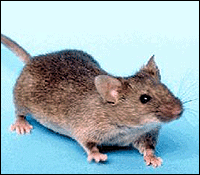CMDCMiracle
심혈관 대사질환센터
Cardiovascular and Metabolic Disease Center
Mitochondrial Research Affinity Collaboration-Laboratories & Engineering
0
Cardiovascular and Metabolic Disease Center
Mitochondrial Research Affinity Collaboration-Laboratories & Engineering
Home
> 0
Mouse Study Shows Gene Therapy Provides Temporary Protection from Radiation
- 작성자한진
- 작성일2006-08-13 14:14:45
- 조회수2415

Total406개
[ page26/28 ]
| No. | 제목 | 작성자 | 작성일 | 조회수 |
|---|---|---|---|---|
| 31 | Mitochondria and Diabetes 2005.01.30 | 한진 | 2005.01.30 | 2,064 |
| 30 | 건강하게 오래오래 사세요. 2005.01.30 | 한진 | 2005.01.30 | 2,070 |
| 29 | 향후 10년간의 의약품 R&D 예측: 미토콘드리아......심혈관질환의 치료표적 2005.01.30 | 한진 | 2005.01.30 | 2,415 |
| 28 | 말아톤은.... 2005.01.30 | 한진 | 2005.01.30 | 1,935 |
| 27 | 오래 오래 삽시다. 2005.01.30 | 한진 | 2005.01.30 | 3,393 |
| 26 | 중년기의 심혈관 위험인자들이 치매 위험을 증가시켜...... 2005.01.28 | 한진 | 2005.01.28 | 1,933 |
| 25 | 세포 발견이 질병 인식을 이끌어낸다 첨부파일 2005.01.27 | 강성현 | 2005.01.27 | 1,843 |
| 24 | 심장 발작에 대한 9가지 주안점 첨부파일 2005.01.27 | 강성현 | 2005.01.27 | 1,781 |
| 23 | 미토콘드리아에서의 문제점들이 대사적 증후군에 중요한 역할을 한다 첨부파일 2005.01.27 | 강성현 | 2005.01.27 | 1,974 |
| 22 | 보다 나은 근육들을 만듬 첨부파일 2005.01.27 | 강성현 | 2005.01.27 | 2,012 |
| 21 | 다윈의 피리새들 첨부파일 2005.01.27 | 강성현 | 2005.01.27 | 1,924 |
| 20 | Age well the mitochondria way 2005.01.27 | 한진 | 2005.01.27 | 3,546 |
| 19 | Mitochondria Make A Comeback, Science (Cover page) 2005.01.27 | 한진 | 2005.01.27 | 3,329 |
| 18 | The Mitochondrion: Central to Apoptosis (from Science) 2005.01.27 | 한진 | 2005.01.27 | 6,107 |
| 17 | L-carnitine needed transport fats 2005.01.26 | 문혜진 | 2005.01.26 | 2,661 |



